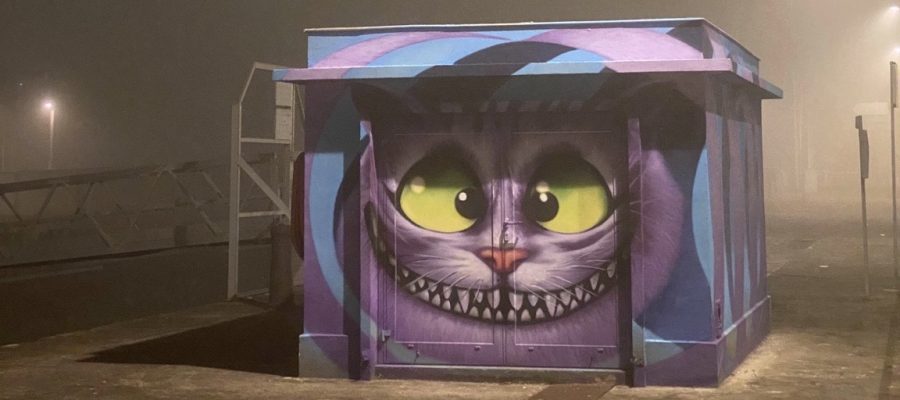It’s a classic issue for BotConf attendees, the last day is always a little bit stronger due to the social event organized every Thursday night. This year, we are in the French area where good wines are produced and the event took place at the “Cité du Vinâ€. The night was short but I was present at the first talk! Ready as usual!
The first talk was “End-to-end Botnet Monitoring with Automated Config Extraction and Emulated Network Participation†by Kevin O’Reilly and Keith Jarvis. Sometimes, you hesitate to attend the first conference of the day due to a lack of motivate and you have to force yourself.
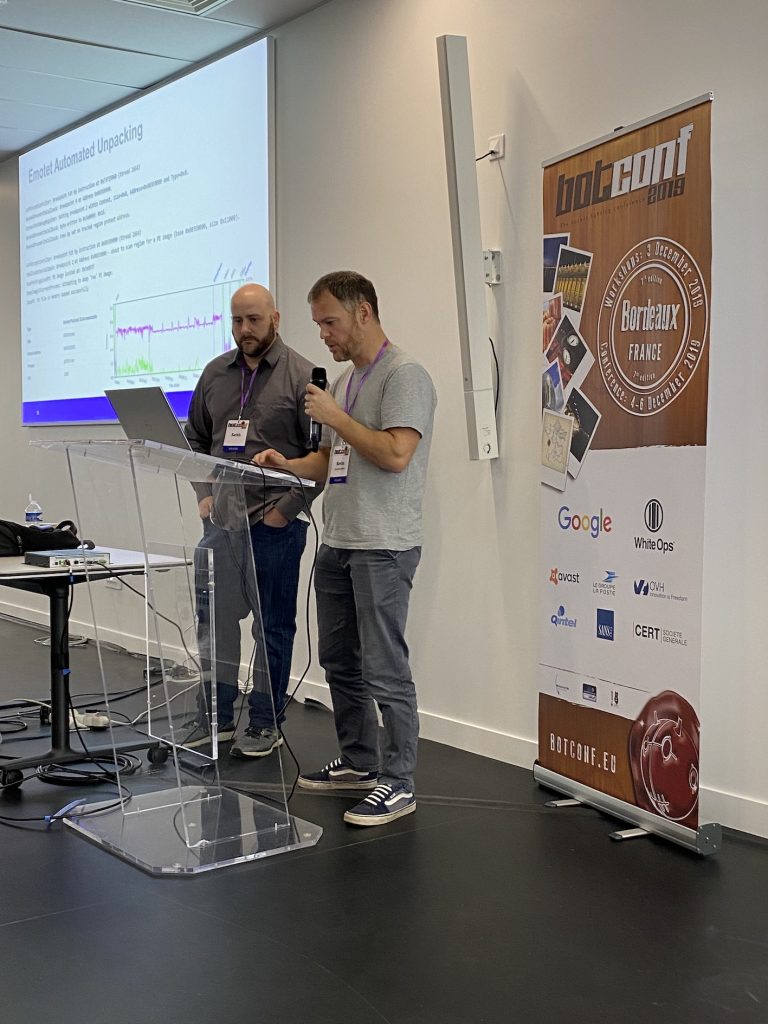
Today, it really deserved to wake up on time to attend this wonderful talk. It started with a comparison of two distinct approaches to analyze malware samples: emulator vs. sandbox. For a sandbox, you provide a sample and results can be used as input for an emulator: C2, IPs, encryption keys, etc… (and vice-versa). The next part of the talk was dedicated to CAPE (“Config And Payload Extraction”) which is a fork of Cuckoo but with many decoding features that help to unpack and analyze via the browser. It has an API monitor, a debugger, a dumper, import reconstructor, etc. Many demos were performed. I’ll definitively install it to replace my old Cuckoo instance! The project is here.
The next talk was presented by Suguru Ishimaru, Manabu Niseki and Hiroaki Ogawa: “Roaming Mantis: A melting pot of Android bots“. This campaign started in Japan in 2018 and compromised residentials routers. Classic attacks: DNS settings were changed to redirect victims to rogue websites that… delivered malware samples! The talk covered malware samples that were used in the campaign:
- MoqHao
- FakeSpy
- FakeCop
- FunkyBot
For each of them, the malware was analyzed using the same way: how was it delivered, compromization, connections with the C2. The relation between them? They used the same technique to steal money. The money laundering process was also reviewed.
After a welcome coffee break,”The Cereals Botnet” was presented by Robert Neumann and Gergely Eberhardt. This time, no Android, no Windows but… NASes! (storage devices). This makes it a pretty unique botnet of approximatively 10K bots. The target was mainly D-Link NAS devices (consumer models).
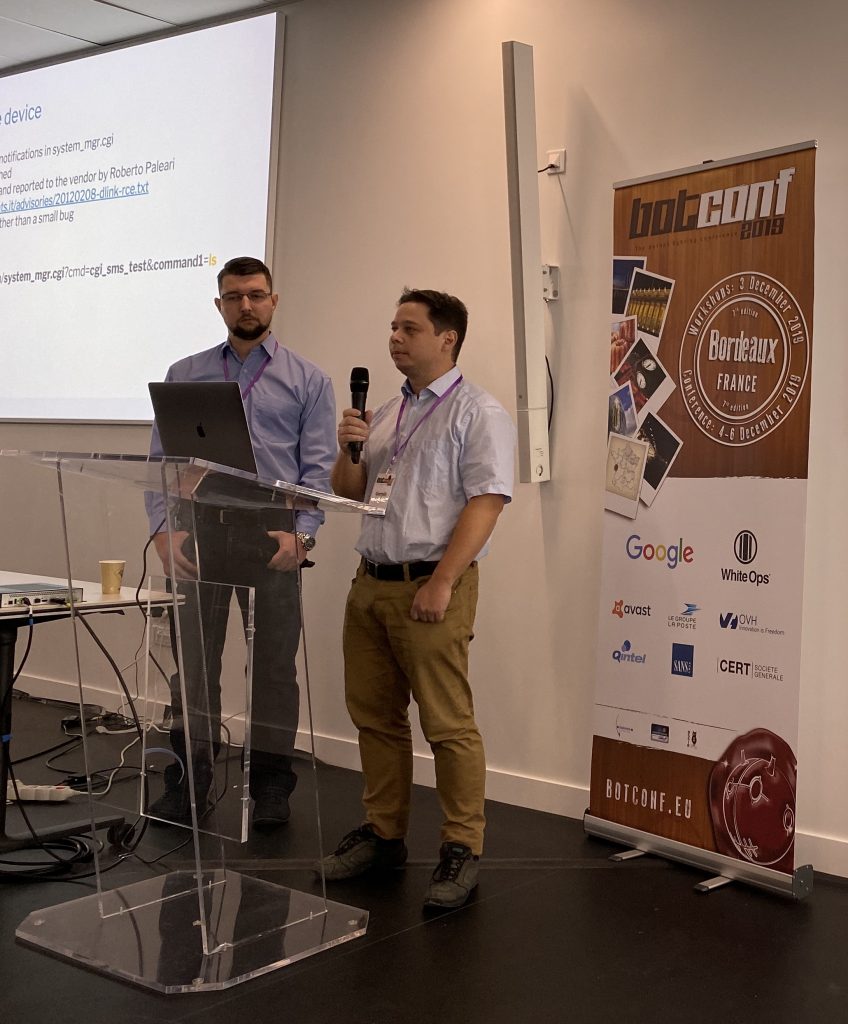
They started to explain how the NAS was compromized using a vulnerability in a CGI script. To better understand how it worked, they simply connected a NAS on the wild Internet (note: don’t try this at home!) and were able to observe the behavior of the attacker (unusual HTTP request, outgoing traffic and suspicious processes. The exploit was via the SMS notification system in system_mgr.cgi. Once compromized, there was also a backdoor installed, many software components (a VPN client) and persistence was implemented too. I like the way the bot communicated with the C2: Via a feed RSS! Easy! Finally they explained that the vulnerability was patched by the vendor (years later!) but many devices remain unpatched…
The next talk was the result of a student’s research who tried to develop a tool to improve the generation of YARA rules. “YARA-Signator: Automated Generation of Code-based YARA Rules” presented by Felix Bilstein and Daniel Plohmann.
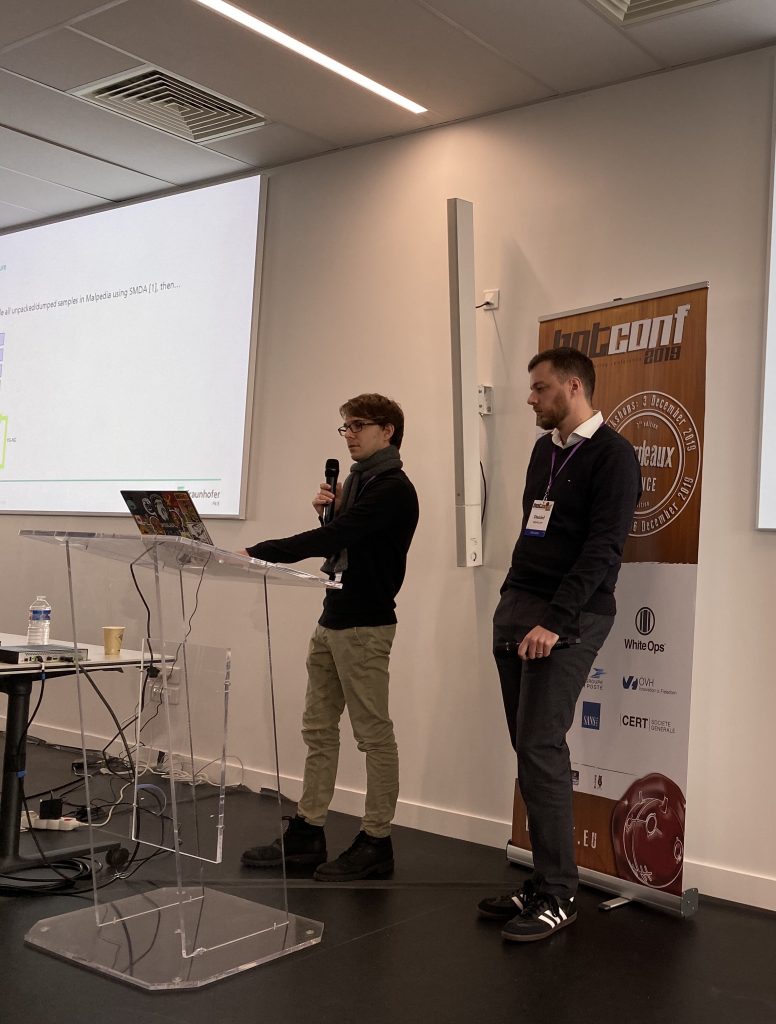
No need to present YARA. A fact is that most public rules (73%) are based on text strings but code-based rules are nice: they are robust, harder to circumvent by attackers and easier to automate but… not manually! A tool can be used for this purpose: YARA-Signator. The approach was to create signatures based on families from Malpedia. First, they explained how the tool works then the results. Interesting if you’re a big fan of YARA. The code is here.
After the lunch, the scheduled talk was “Using a Cryptographic Weakness for Malware Traffic Clustering and IDS Rule Generation” by Matthijs Bomhoff and Saskia Hoogma. This is kind of talk that I’m fear of after a nice lunch… The idea of the talk was to explain that bad encryption implementations by attackers can be used to track them.
There was no coffee break foreseen in this afternoon, so we continued with three talks in a row. “Zen: A Complex Campaign of Harmful Android Apps” by Lukasz Siewierski. A common question related to malware samples is: Are all apps are coming from the same author (or group?). Lukasz explained different techniques called “Zen” that perform malicious activities:
- Repacking with a custom ad SDK
- Click fraud
- Rooting the device
- Fake Google account creation
- Code injection
- Persistence
It was a review of another Android malware…
Martijn Grooten continues with “Malspam is Different Spam“. Martijn explained that, if spam is not a new topic, it remains a common infection vector. Why some emails are more likely to pass through our filters? A few words about spam-filtering, we rely on:
- Block lists (IP, domains)
- Sender verify (SPF, DKIM, DMARC, etc)
- Content filtering (viagra, casino, …)
- Link & attachments scanning
Some emails go to the sam traps and results are sent to the spam filter (which can also update itself). Spam scales badly. Then, Martijn showed some better examples that have chances to not be blocked.
Finally, the conference ended with “Demystifying Banking Trojans from Latin America” by Juraj Hornák, Jakub Soucek and Martin Jirkal. They presented the LATAM banking landscape (targetting Spanish & Portuguese speaking people) with malware. They explained the techniques used by the different malware families with the final goal to see the relations between them:
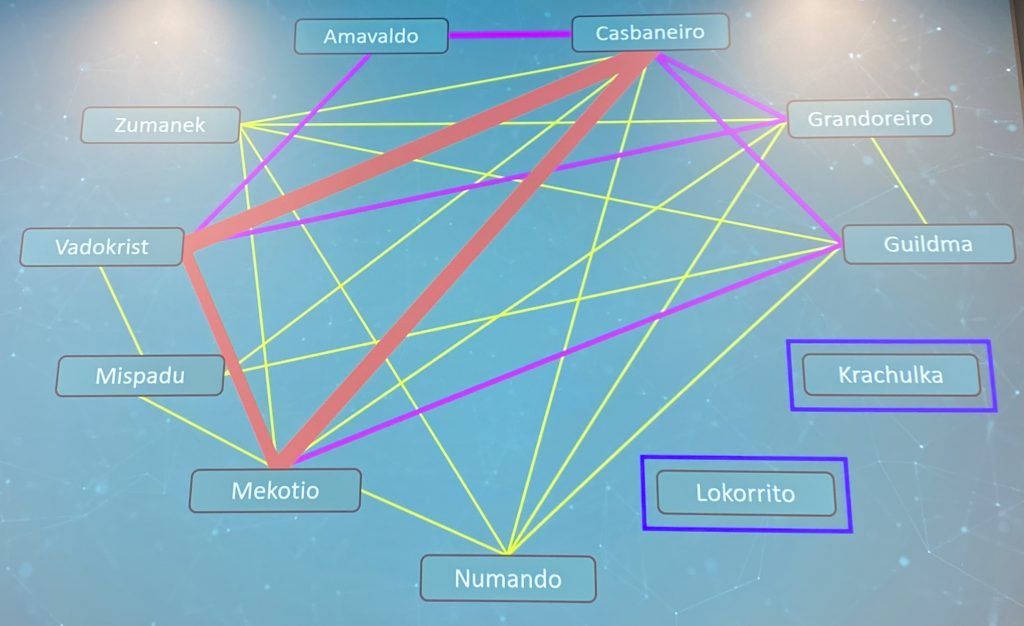
I like the “easter egg and human error” part where they explained some mistakes make by the attackers like… keeping a command in the code to spawn a calc.exe 😉
This edition could be called the “Android Malware Edition” seeing the number of presentations related to Android! (Like we had the “DGA Edition” a few years ago). This wrap-up closes these three days of BotConf 2019! Here are some stats provided by the organization:
- CFP: 73 submissions
- 3 workshops
- 1 keynote
- 28 presentations
- 50 speakers
- 1730 minutes of shared knowledge.
As usual, they also disclosed the location of the 2020 edition: we will be back to Nantes!
